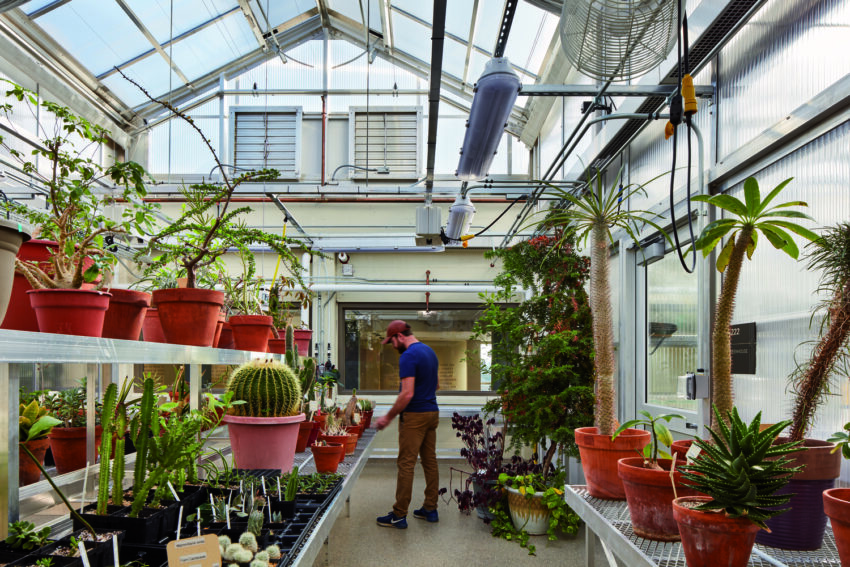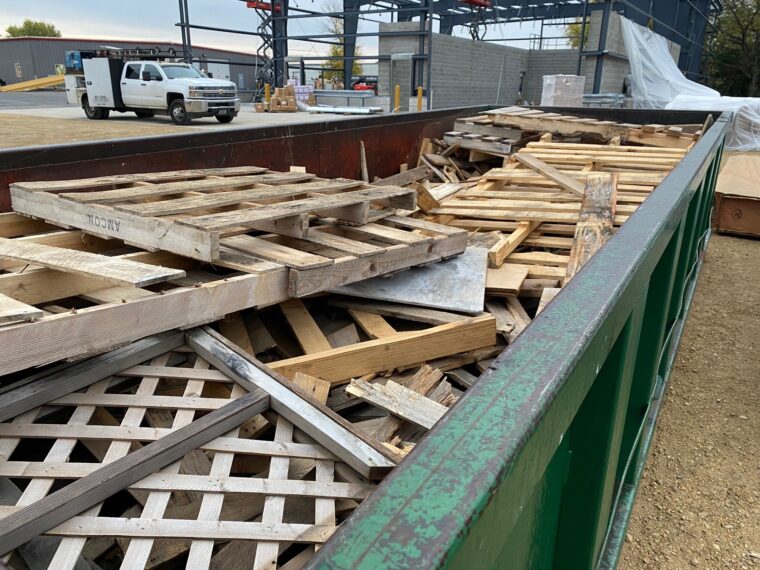KA Gets Greener: LEED, WELL and Sustainability Achievements| Kraus-Anderson
Photos: Left, Nobel Hall, Gustavus Adolphus College, St. Peter, MN; right: Strang Architecture offices, Madison, WI.
For the third straight year, Kraus-Anderson has climbed up Engineering News-Record’s Top 100 Green Contractors rankings.
Having just made the list in 2019 (ranked #100), KA jumped from the 92nd ranked Green Contractor in 2020 to #87 in 2021. The rankings are based on the firm’s previous year’s domestic revenues that have been registered with third-party green building or sustainable construction ratings organizations. KA is one of just four contractors based in either Minnesota, North Dakota, or Wisconsin – the states in which KA has a physical presence – to make the list in 2021. Here’s a look at some of what’s powering KA’s green achievements.
Credentialed Team
Guided by company principles and galvanized by the company’s 2018 investment in a Leadership in Energy and Environmental Design (LEED) Silver-certified corporate headquarters building in Minneapolis, KA is motivated and well-positioned to facilitate sustainable outcomes that benefit our clients and the local communities. In total, KA has 34 LEED accredited professionals, 37 LEED Green Associates, and 4 WELL Building accredited professionals that foster awareness and deliver innovative solutions to help our clients optimize the operational performance of their physical assets. Moreover, from energy conservation measures on our job sites to the recycling and composting programs in our offices, our organization is doing what it can to work responsibly and sustainably.
Green Project Portfolio
Under the oversight of the United States Green Building Council (USGBC), LEED v4 certification stands as the current benchmark for sustainability achievements in the design and construction of buildings, and KA teams have helped blaze the trail. To date, KA has built 94 LEED-certified projects beginning with the construction of LEED pilot project Phillips Eco Enterprise Center in 1998. KA’s many notable LEED projects represent a spectrum of markets and applications, including schools, healthcare, mixed use redevelopment and government sector projects.

Located in St. Peter (MN), Gustavus Adolphus College’s recently expanded Nobel Hall of Science was among the 2020 projects contributing to KA’s national recognition. The LEED Silver certified, $70 million expansion project featured locally sourced materials, ample daylight, and energy-efficient building systems. During construction, KA recycled approximately 70% of construction waste. Earlier this decade, KA also completed Beck Academic Hall, a LEED Platinum-certified, 125,000 SF academic building for the college that exceeded State of Minnesota Building 2030 targets.
WELL Standards
Additionally, in recent years WELL Certification has emerged as a leading tool for advancing health and wellbeing in buildings, incorporating standards for concepts relating to air, water, nourishment, light, movement, thermal comfort, sound, materials, mind and community. KA partnered with Strang Architects on the creation of the firm’s Madison, Wisconsin office interior, the first WELL-certified project in the state.
[perfectpullquote align=”right” bordertop=”false” cite=”” link=”” color=”#CC0202″ class=”” size=””]“The choices we make as owners, designers, builders and consumers of our built environments really do have an impact.” [/perfectpullquote]
A Responsible Approach
With these and other projects, KA serves as a strategic partner as clients and partners strive toward their own sustainability commitments and health and wellness considerations informed by today’s world. Regardless of a client’s interest in pursuing green building certification(s), KA incorporates environmentally responsible and economically viable approaches to each project because it aligns with our purpose to build strong communities.
Examples of standard protocol on KA jobsites include:
- Plan and track recycling and construction waste management
- Use of recycled concrete and asphalt for pavement sub-base in lieu of aggregate
- Use of regional materials
- FSC certified wood products
- Use of low VOC glues, caulking/sealants, paints, adhesives for flooring
“The choices we make as owners, designers, builders and consumers of our built environments really do have an impact,” said David Kray, LEED AP BD+C and Senior Project Manager at Kraus-Anderson. “We are pleased to offer our owners and business partners sound approaches to help them achieve their sustainability goals.”

CATEGORY: Uncategorized